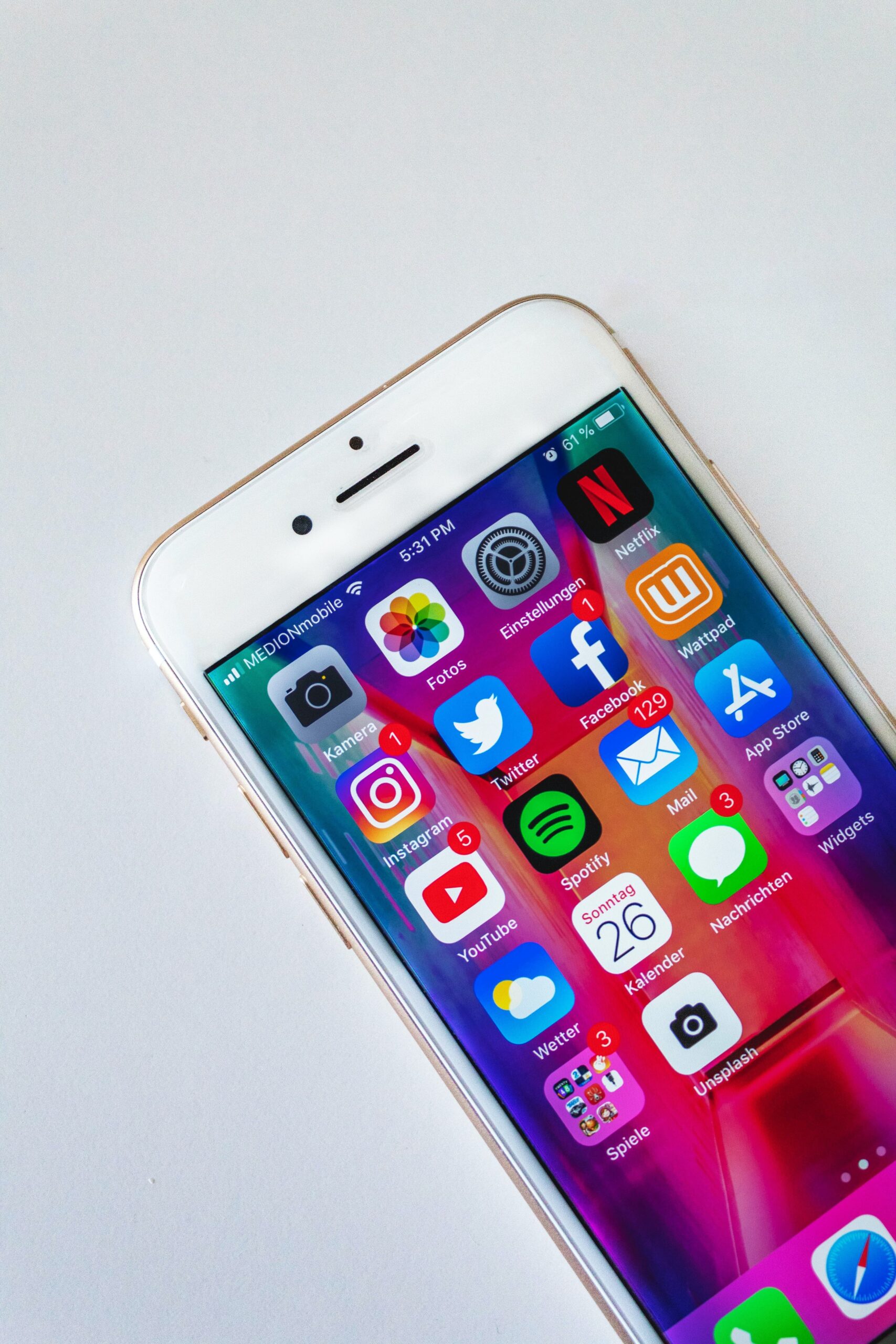CULTURE
The Cult of Positivity: Hulu’s “Jawline” Exposes How Social Media Influencers Profit from Despair
31 Aug, 19

Image by Sara Kurfess (Unsplash)
The cult of positivity has a smiling veneer.
Through social media, online communities aim to uplift struggling individuals rather than bully them, vulnerability is rewarded rather than mocked, and the Internet is used for outreach and connection rather than escapism. Except it’s all a lie, at least when it comes to social media influencers who use banal affirmations and empty platitudes to encourage their young, mostly female viewers to “stay positive” and follow their dreams “no matter what”—not to mention pay $200 to come meet them in person at the local mall, where they dole out hugs, take selfies, and shop with their fans.
Jawline: Trailer (Official) • A Hulu Original Documentaryyoutu.be
Hulu’s Sundance Award-winning documentary Jawline captures the niche world of online broadcasting, wherein young, telegenic teens who dream of fame can live stream to their (hopefully) growing fanbase. Director Liza Mandelup interviewed a few of these moderately successful, fame-hungry teens for a year before she found her main star, Austyn Tester. At the time of filming, the 16-year-old from rural Tennessee was an unknown who aspired to become a social media star. Starry-eyed, blond-haired, and cherubic, Austyn stared guilelessly into his webcam as he streamed to his 7,000 fans on the broadcasting platform YouNow. “When I was aware of this power you had [on social media], I was like, ‘Wow. I’d love to be able to have this power but use it in a positive way. Change people’s lives,” Tester says.
The teen vows he wants to change the world by spreading positivity. But his naivety and blind optimism also have him dreaming of Internet fame as a way out of a dead-end town. Mandelup also interviews Tester’s single mother and brother, candidly revealing a home situation fraught with physical and emotional abuse from a father who’s since left the family. And Tester doesn’t want to get trapped in the moribund routines of small-town America. He says, “Also being hype on the social media realm you make good money so that you can invest that in good things. For me, I’d love to have a lot of money one day invested in my small town but also, most importantly, I just want to inspire people and motivate them to do what they seek to do.”
In fact, Mandelup tapped into the strange, “decentralized economy that has monetized teenage anxiety, depression, and general fragility,” as described by The New Yorker. Most of the tween and early teenage fans who flock to these teenage boys with winning smiles have experienced similar struggles, which Mandelup puts in stark relief through candid interviews with young girls waiting in line to meet their favorite boys. Almost all of them speak of bullying at school and finding reprieve in their online “family”; a few share stories of parents with addiction problems and their own history with self-harm. “I stopped because he told me to,” a very young girl says to the camera as she waits to meet Austyn. Indeed, one of Austyn’s oft-repeated refrains is, “Remember: storms don’t last forever. Whatever you’re going through, it’s not going to last forever.”
Mandelup later reflected, “I think girls at that age fantasize about someone just being nice to them, really, and paying attention to them.” By far, the most successful act featured in Jawline is Julian and Jovani Jara, identical-twin DJs who have nearly half a million followers on Instagram. Their dual smiles and ever-present optimism make them top celebrities within the niche world of online broadcasting—so much so that when Austyn gets the chance to tour with them, he hopes it’s his big break.
To no one’s surprise, it’s not, which Mandelup teases with footage of another kind of successful broadcaster: the spoiled, privileged, teen capitalists managed by Michael Weist (best known for TanaCon‘s disaster, the Fyre Festival of YouTube conventions). In interviews with Weist, he aptly calls the broadcasting world the “social media gold rush.” He adds, “The nature of this social media business is making as much money as quick as you can because everything has an expiration date and a time limit.” When one of his clients (who later accused him of sexual harassment) refuses to film a video because he doesn’t feel like it, his fellow teen “content creator” tells him: “That’s what social media is. You have to put a smile on your face and act like you’re happy.”
Tester may be more genuine in his intentions than the influencers who have honed their skills at branding themselves as role models, protective big brothers, and dreamy (often shirtless) idols all in one; but, if anything, that’s a disservice to his goals. As The New Yorker observed, “Mandelup walks the tightest of ropes, exposing the reciprocal delusions fueling these transactions, juxtaposing the audience’s horror with her subjects’ excruciating pragmatism.” While the online push for compulsive positive thinking provides an escape for tweens (who have admittedly grown up in a world of crushing anxieties), broadcasting culture is, at its core, a money grab based on fame and greed. “It’s a lie that’s constantly fed to us,” writer Erin Donley critiques of positivity culture at large. “It’s a myth supported by groupthink” and “it sets an unreasonable standard. In reality, all feelings are valid and necessary. The key is to skillfully manage the difficult ones.”
But the cult of positivity has long waxed and waned in American culture, from the first boom of self-help rhetoric in the 1930s to today’s telegenic teens who crowdsource income from adoring fans online. As psychologists keep pointing out, compulsive positivity has pitfalls. Martin Seligman, the psychologist credited with beginning the whole “positive psychology” movement of the 1980s, even says: “The genius of evolution lies in the dynamic tension between optimism and pessimism continually correcting each other.” He also writes, “Positive emotion alienated from the exercise of character leads to emptiness, to inauthenticity, to depression, and, as we age, to the gnawing realization that we are fidgeting until we die.”
In total, Tester is swindled by a fraudulent manager who robs him of the money earned from touring, finds out his homeschooled credits were canceled and has to return to his local high school, and he ends up feeling his motivation to “change people’s lives” through online positivity wane. Meanwhile, the Jara twins he idolizes continue to tour America and greet their devoted fans (they’re also homeschooled), and Weist easily finds new clients. He says, “Influencers and social media always come and go and the businesses stay the same.”
- “Jawline” Exposes Social Media Influencers’ Cult of Positivity – Popdust ›
- How Billie Eilish and Zayn Malik Were Bullied Off Social Media – Popdust ›
- Watch Jawline Streaming Online | Hulu (Free Trial) ›
- This New Hulu Documentary Exposes The Underside Of The … ›
- Jawline: How one documentary captured positivity culture and … ›
- ‘Jawline’ Review: Lives Measured in Follower Counts – The New … ›
- Jawline: behind the social media documentary about short-lived fame ›
- “Jawline,” Reviewed: A Chilling Look at the Making of a Teen … ›
- Sundance Film Review: ‘Jawline’ ›
- Jawline review: a poignant documentary about social media … ›
- What is an Influencer? – Factors that define a Social Media Influencer ›
- The 7 Biggest Secrets Of Social Media Influencers ›













